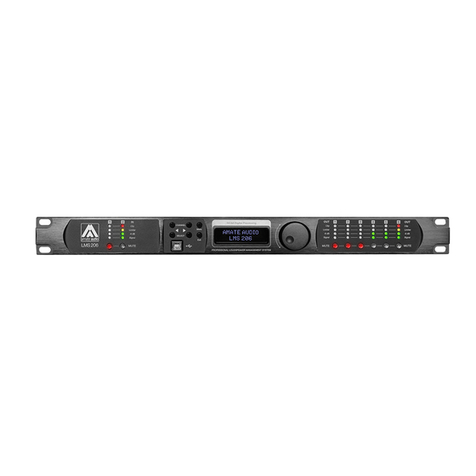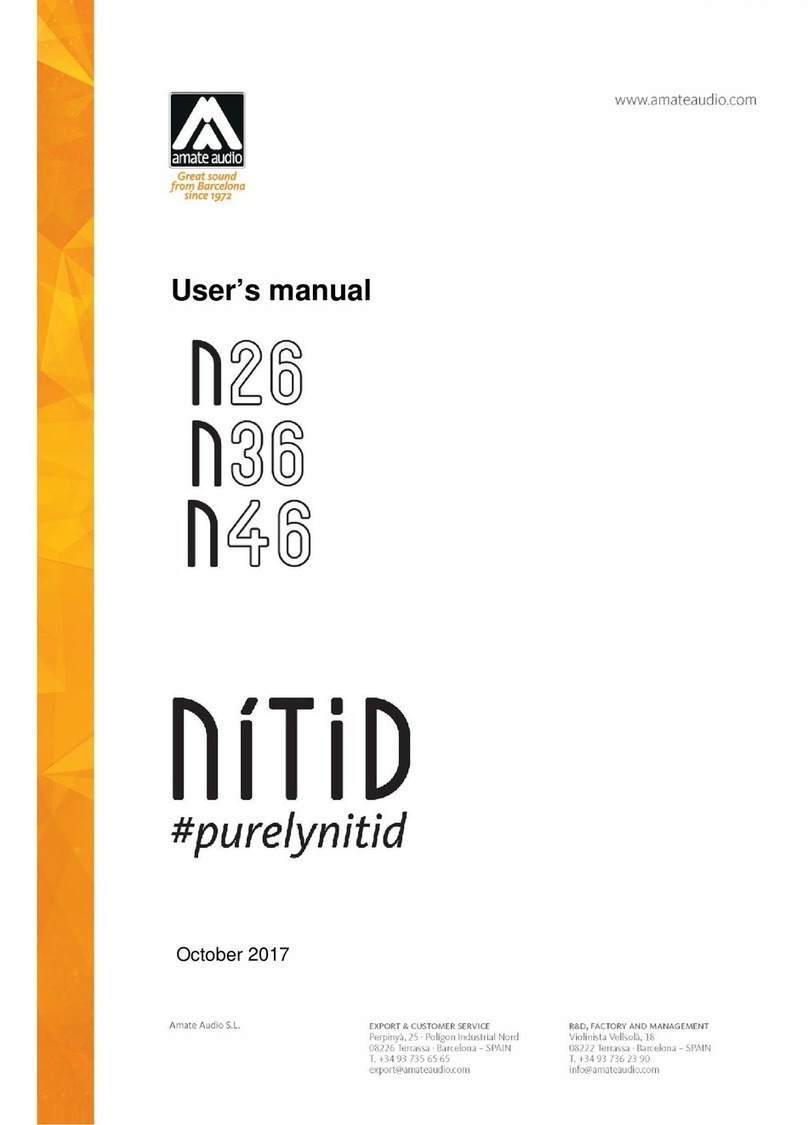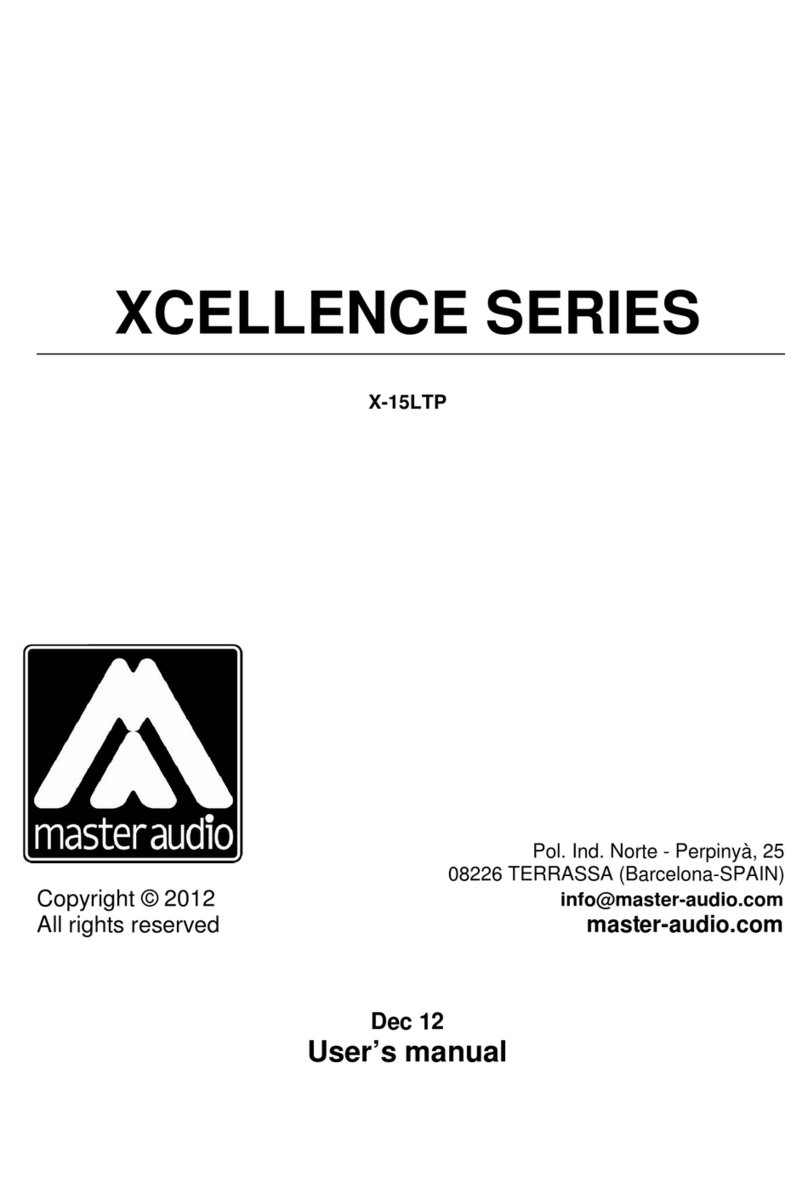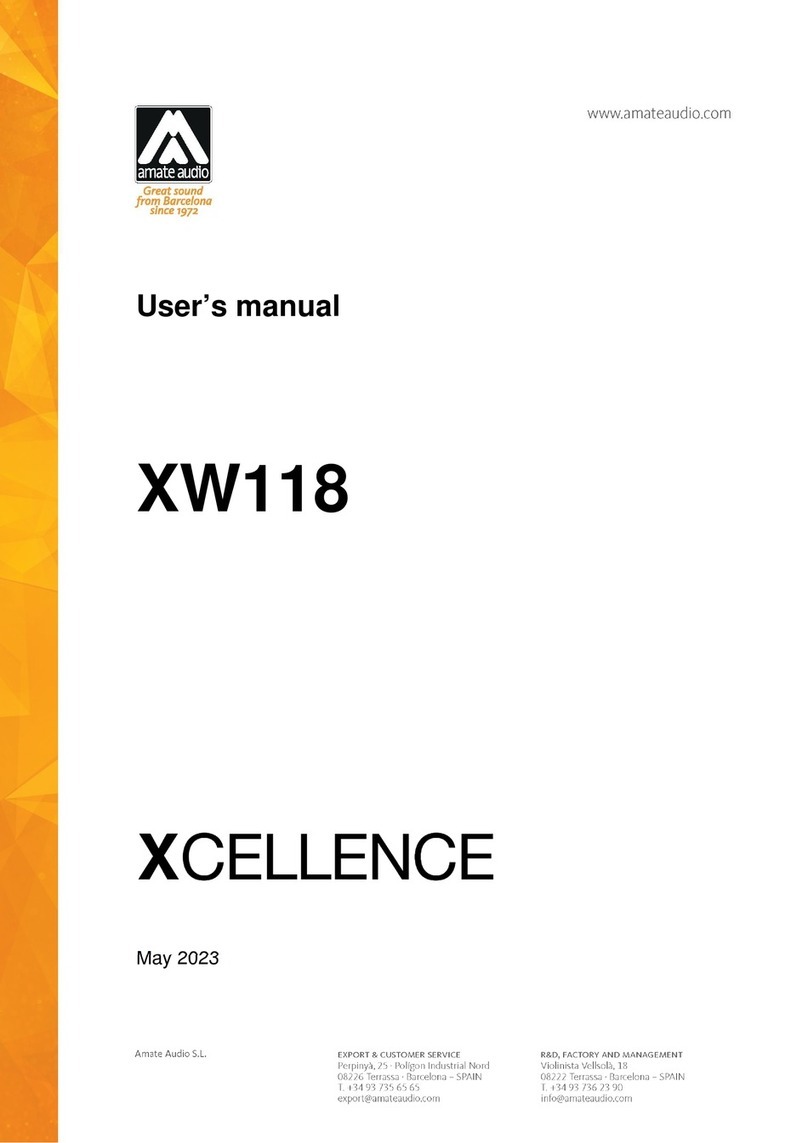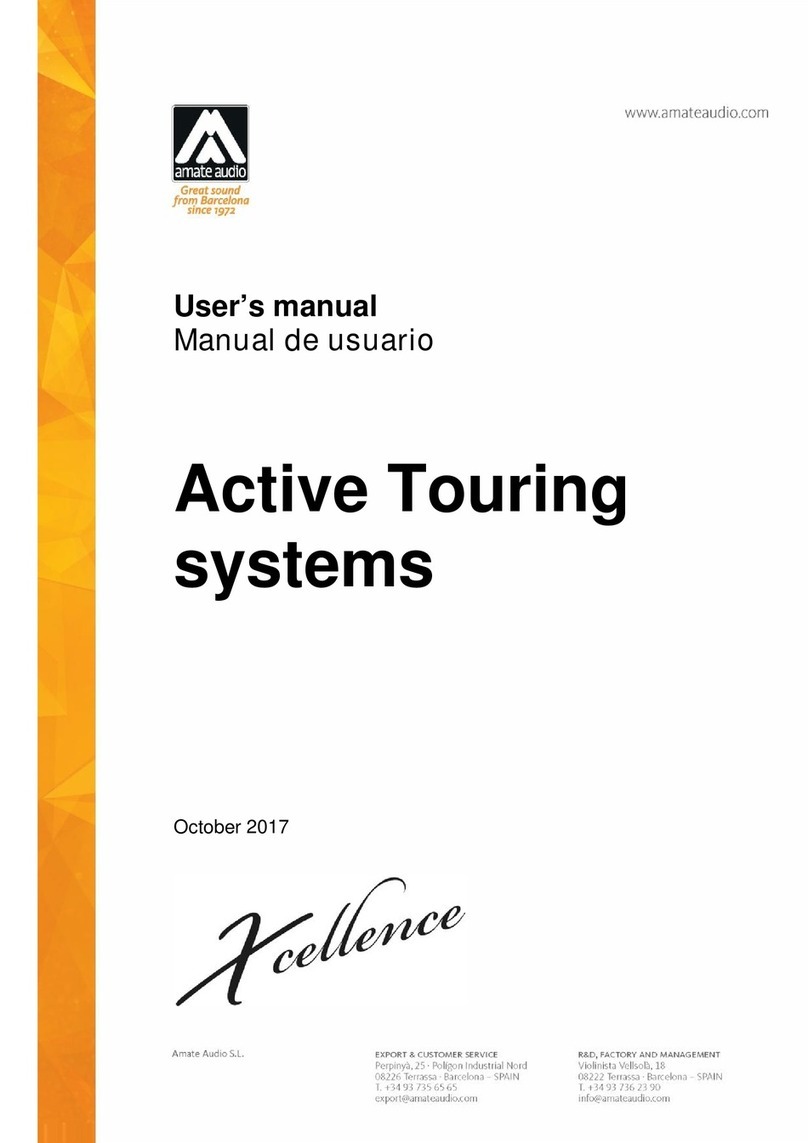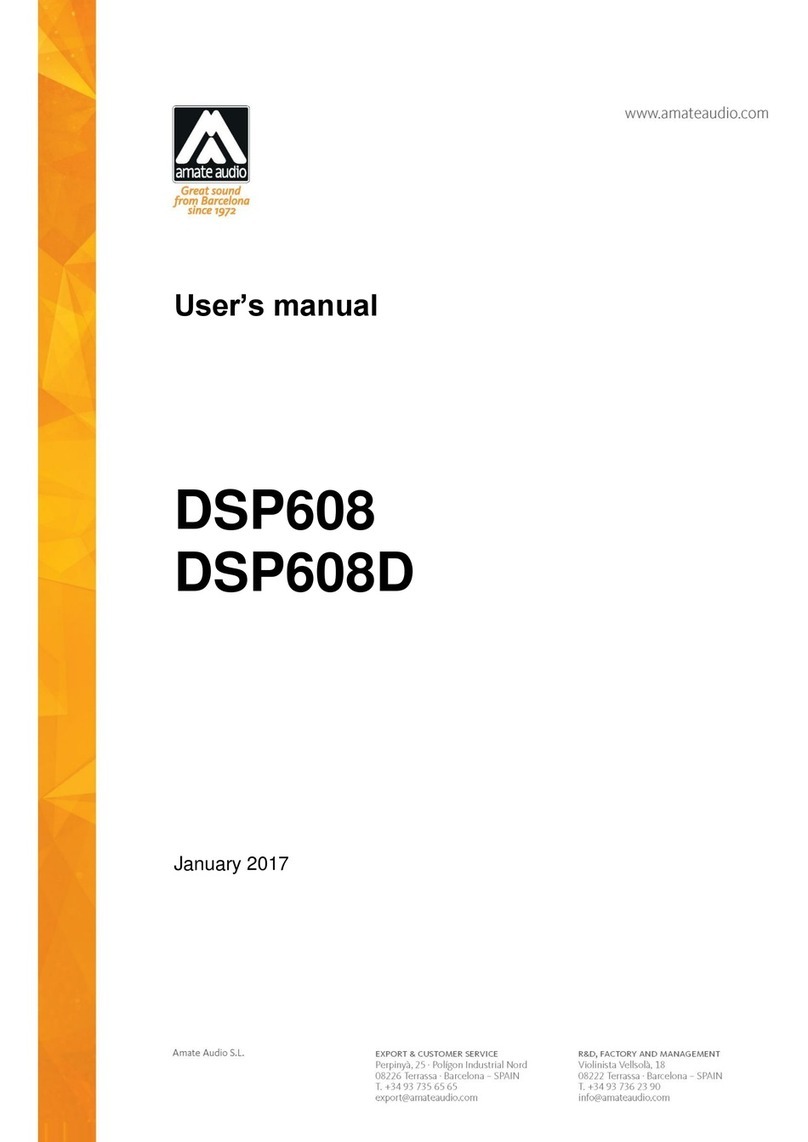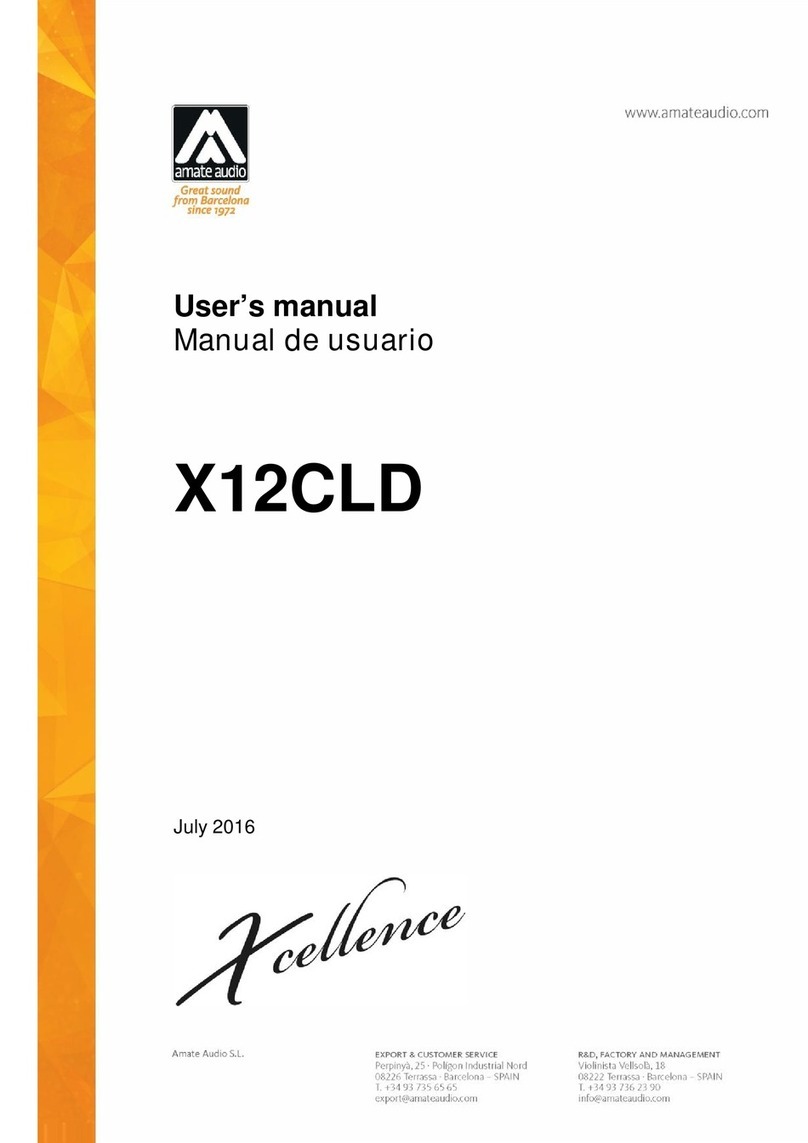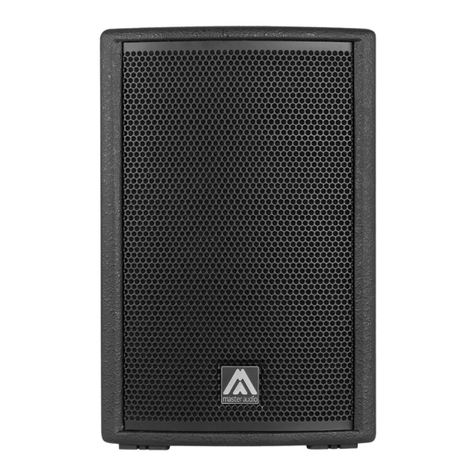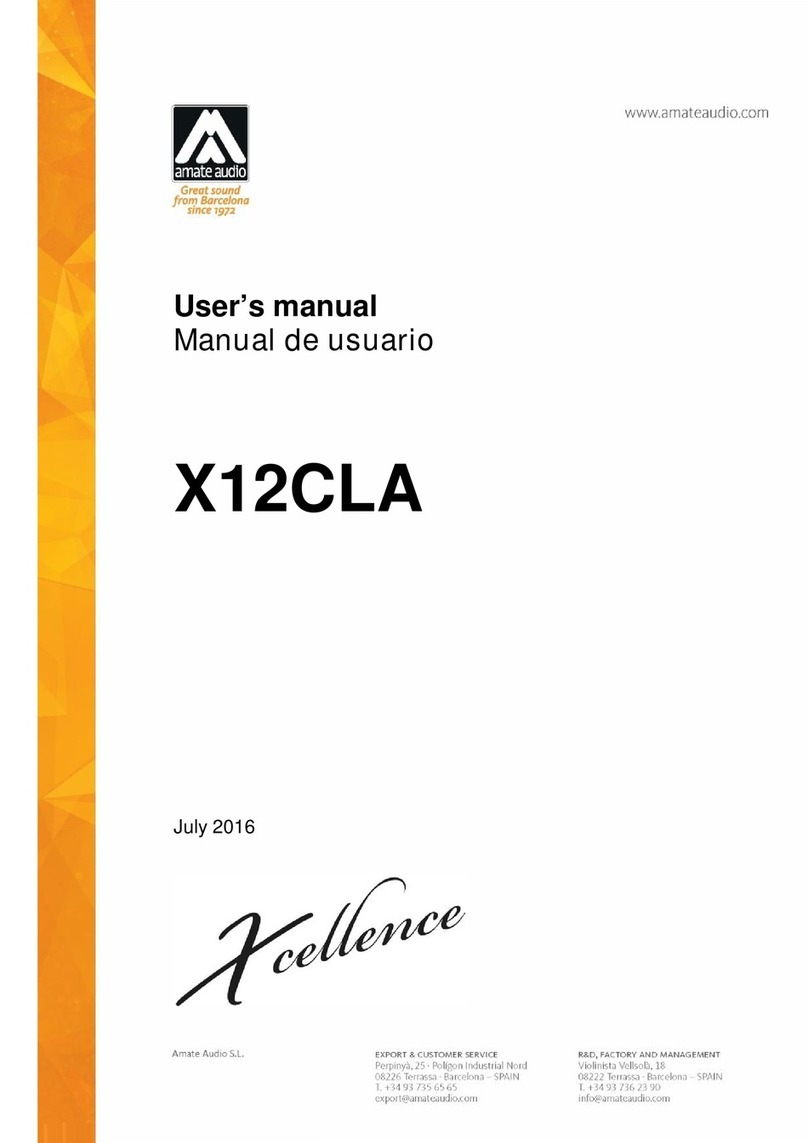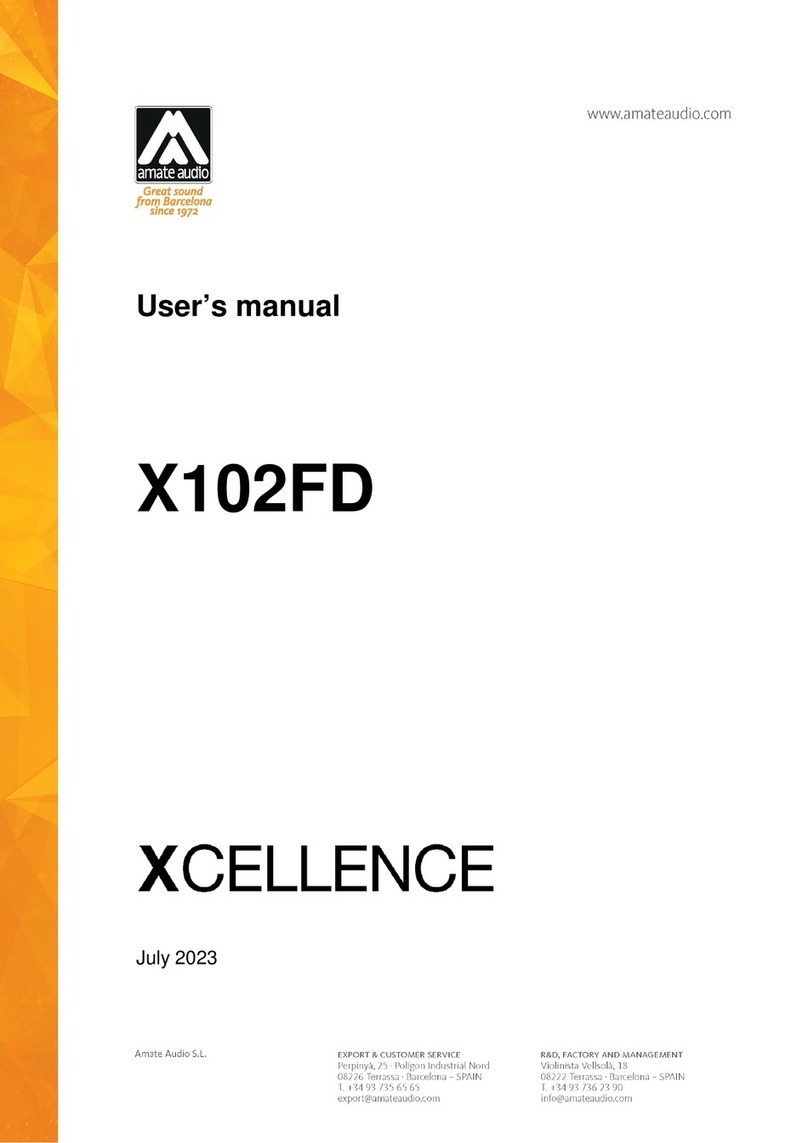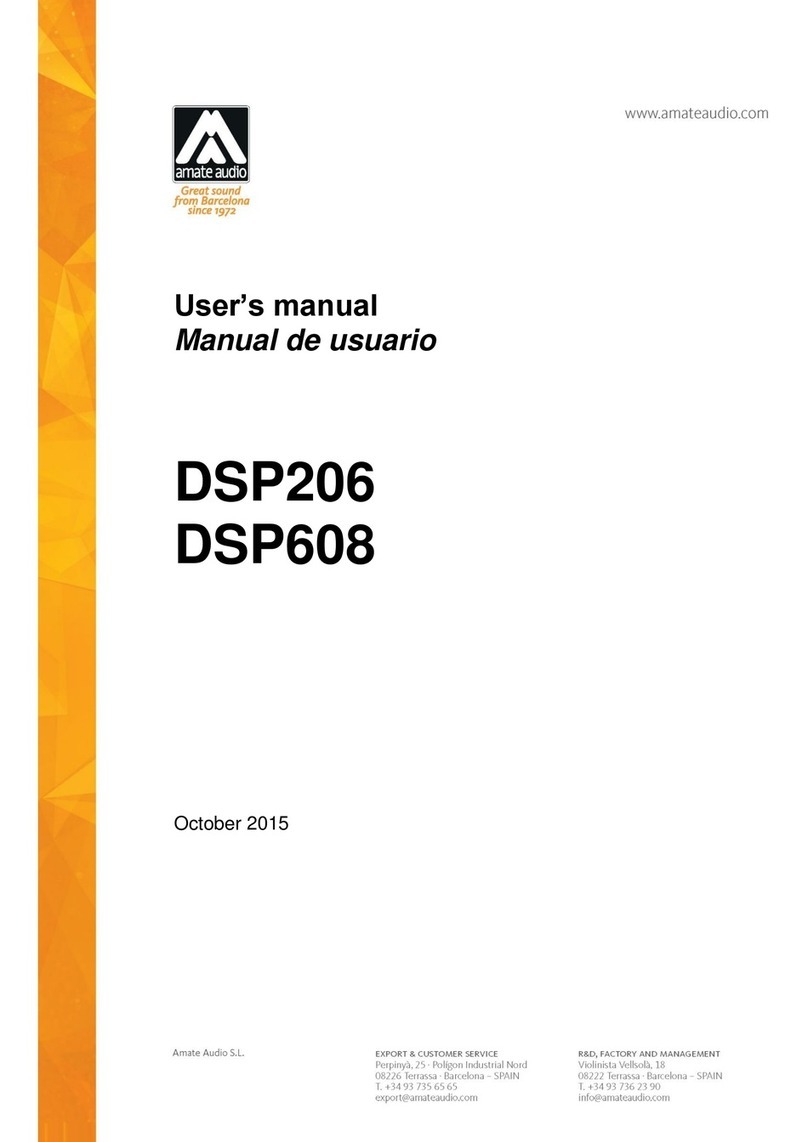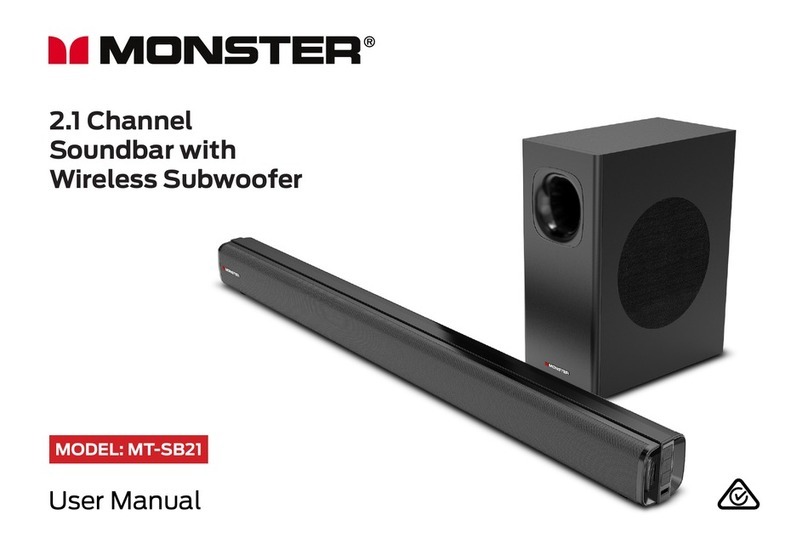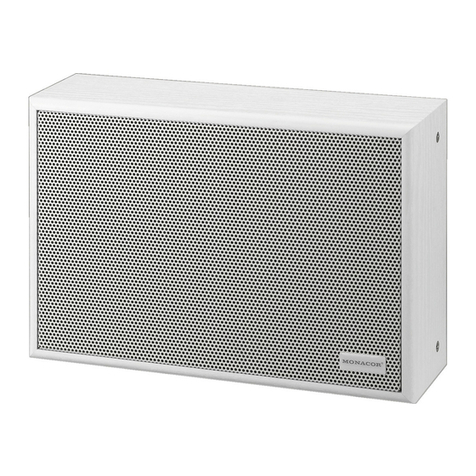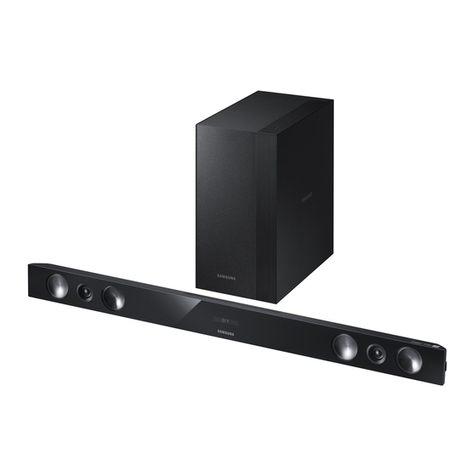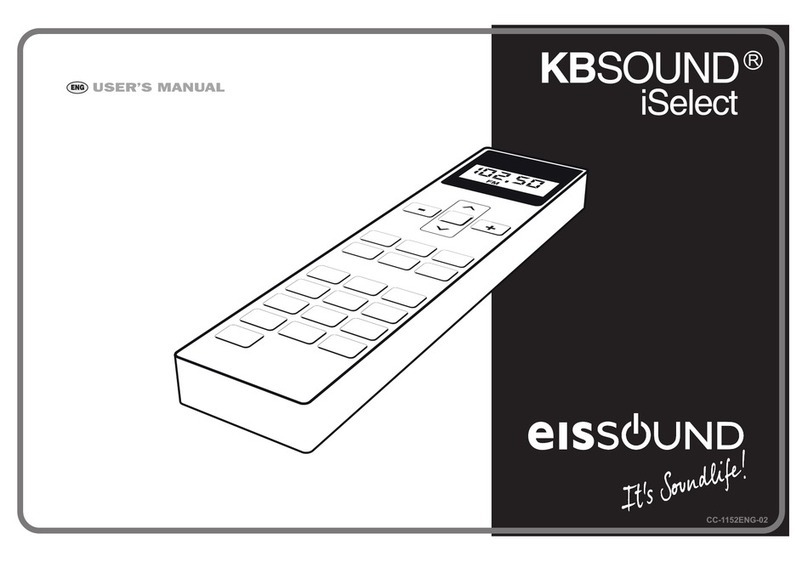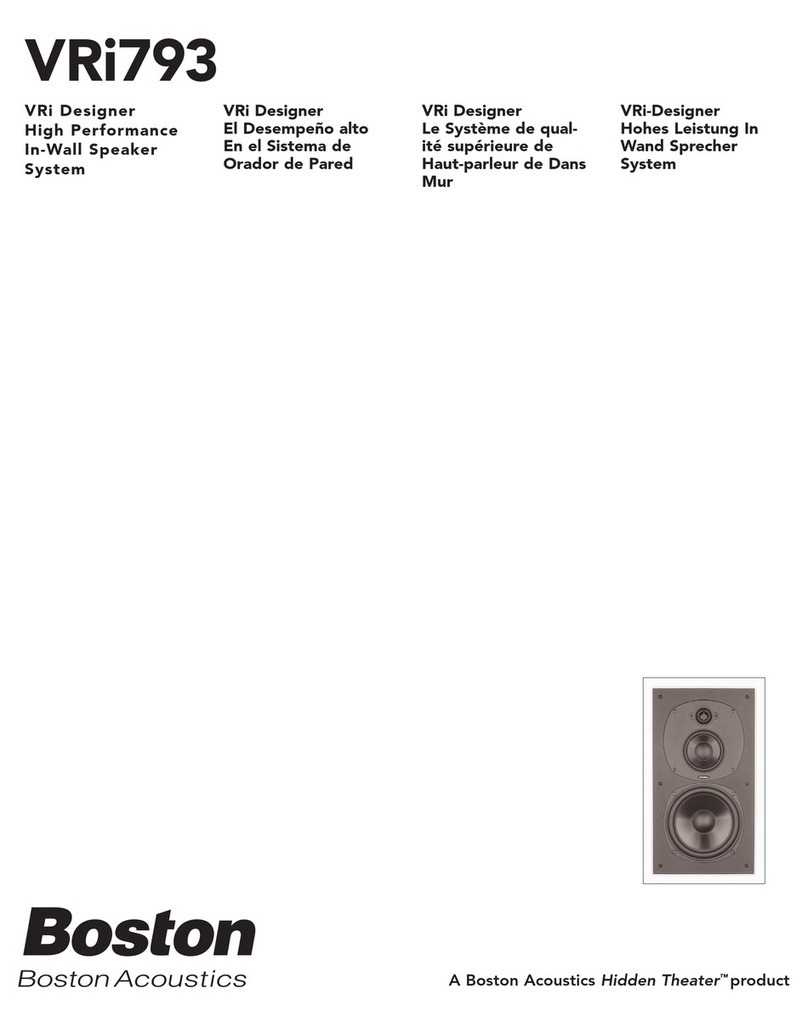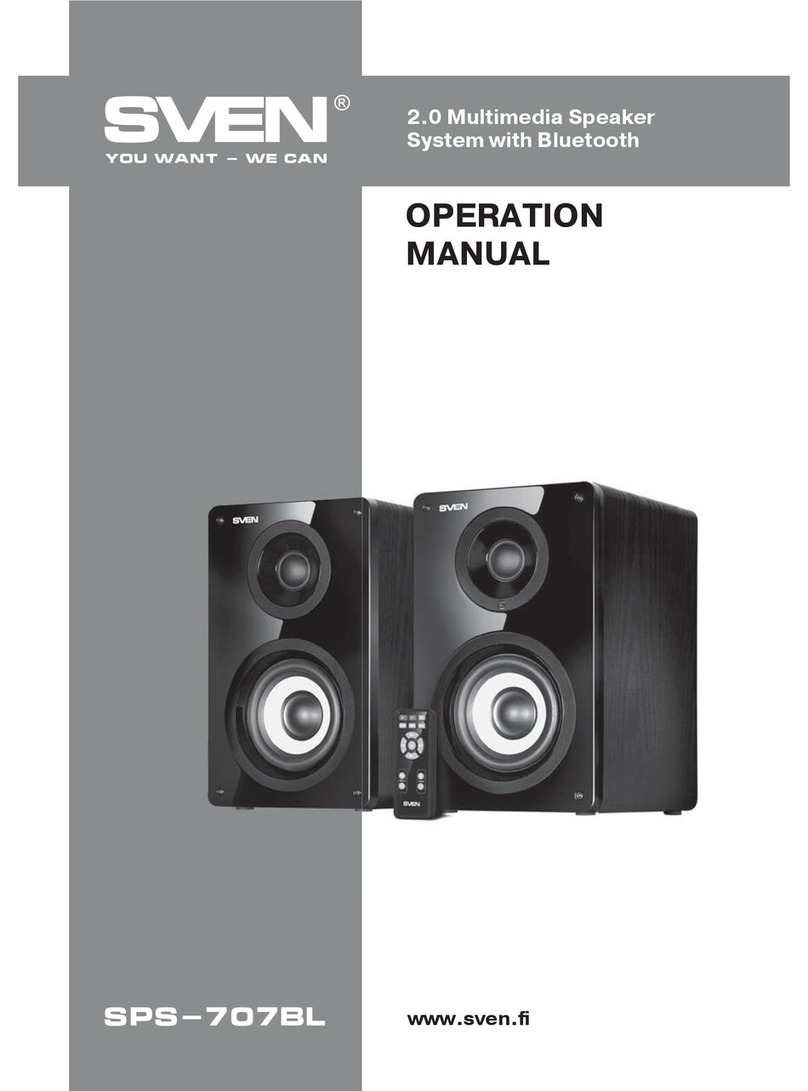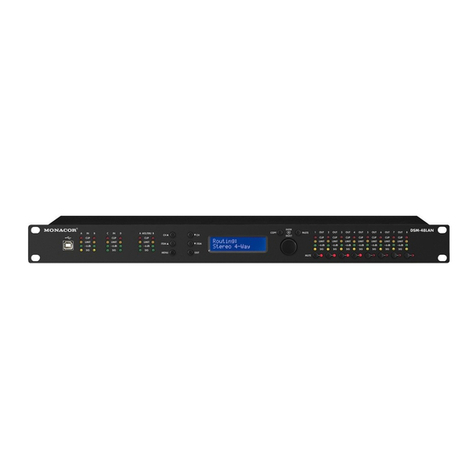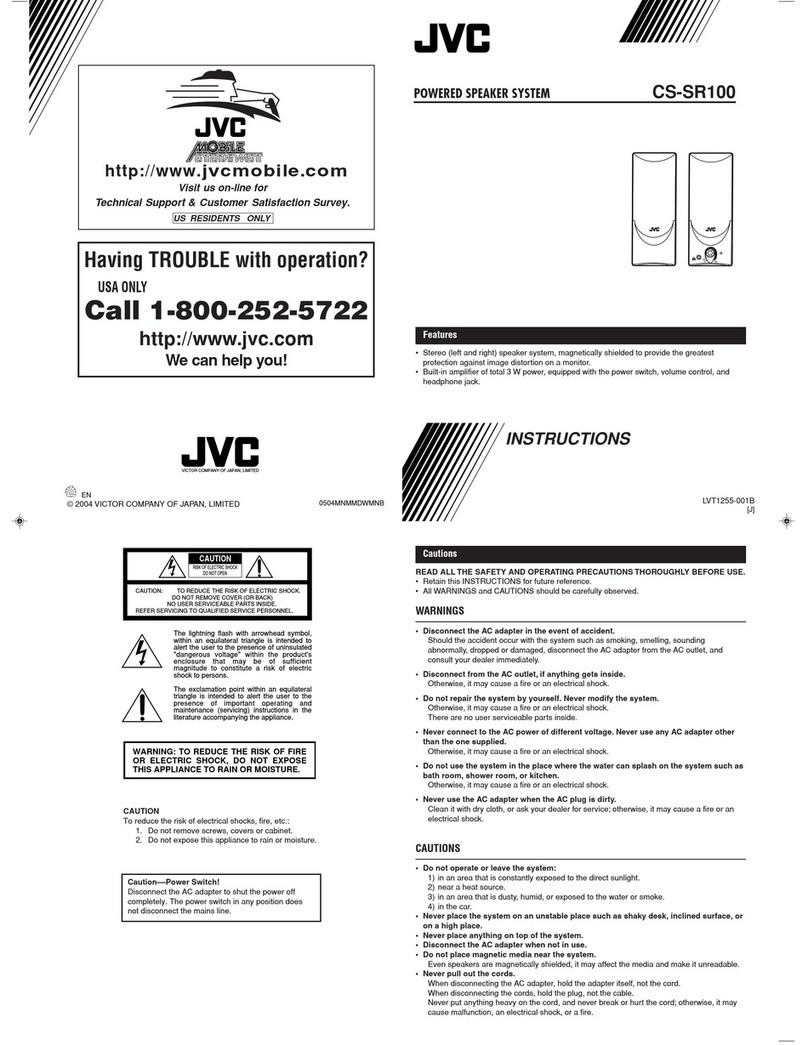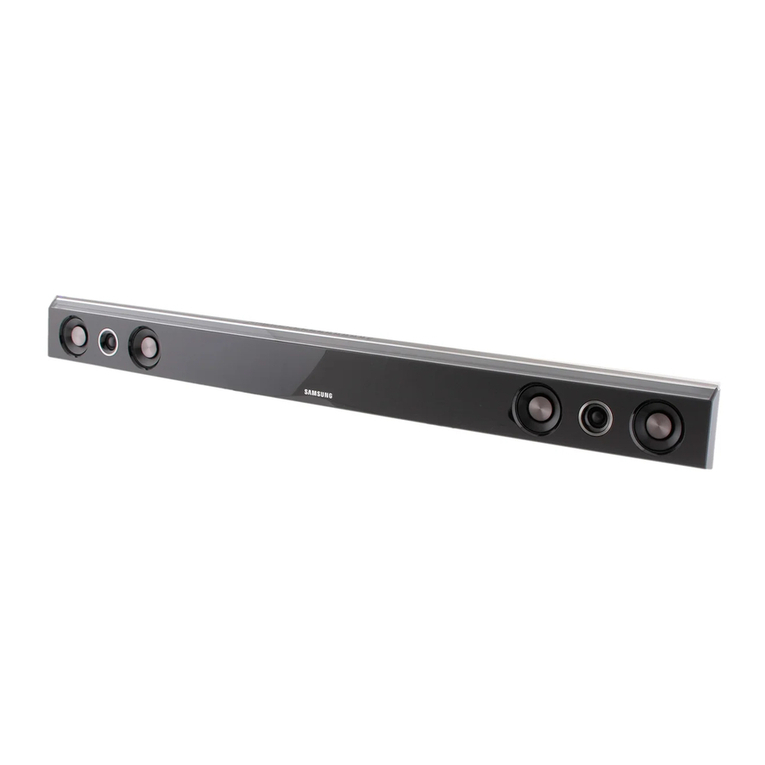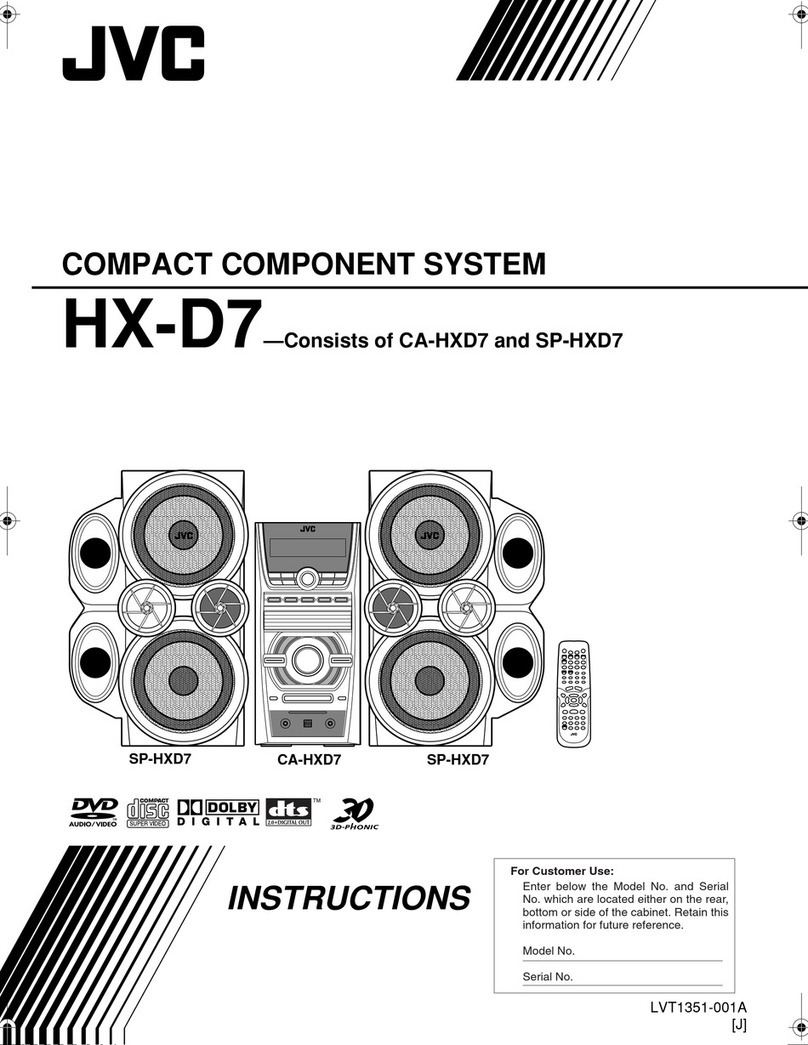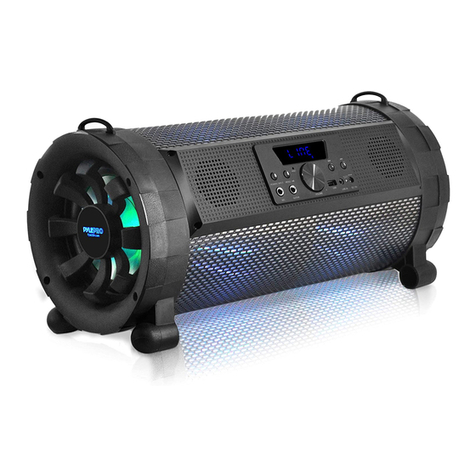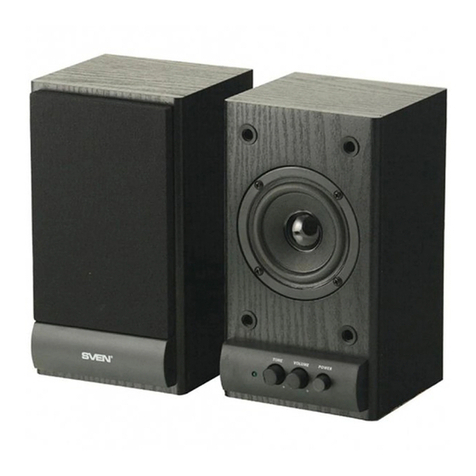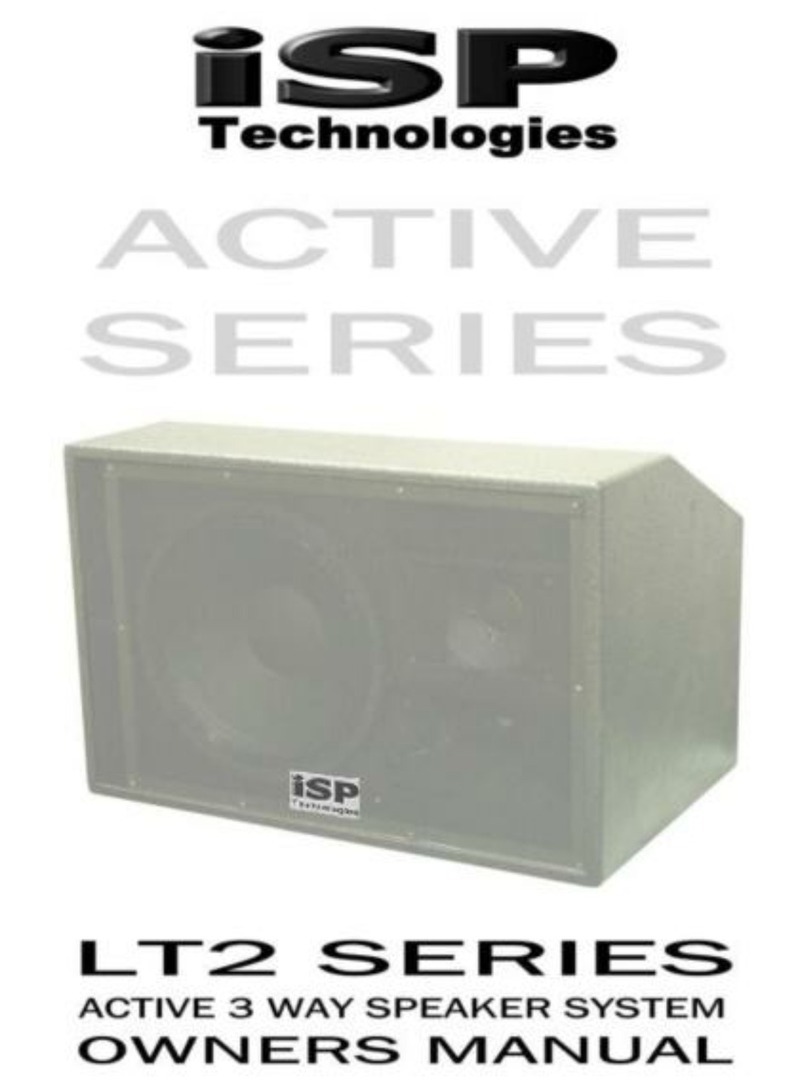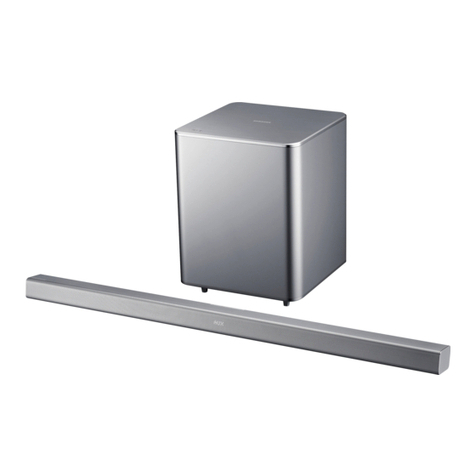LMS608 Feb 2020
5Amate Audio
1 INTRODUCTION
The LMS608 is a complete digital loudspeaker management system designed for the
touring or fixed sound installation markets. The absolute latest in available technology
is utilized with 64-bit floating point processors and high performance 24-bit Analogue
Converters. The high-bit DSP prevents noise and distortion induced by truncation
errors of the commonly used 24-bit fixed-point devices. A complete set of parameters
include I/O levels, 2 second-delay per channel, polarity, 10 bands of parametric EQ
per channel, multiple crossover selections, full function compressor and peak limiter.
Precise frequency control is achieved with its 1 Hz resolution. Inputs and outputs can
be routed in multiple configurations to meet any requirements.
The LMS608 can be controlled or configured in real time on the front panel or with the
intuitive PC/Mac GUI accessed via the USB interface or Ethernet. Software upgrade
for CPU and DSP via PC keeps the device current with newly developed algorithms
and functions once available. Multiple setup storage and system security complete
this professional package.
Shipped contents:
-LMS608/608D unit
-AC power cord
-USB cable for PC connection
2 FEATURES
LMS608
-Electronically balanced inputs
-Matched-impedance balanced outputs
-64-bit floating point DSP
-High Performance 24-bit A/D Converters
-1 Hz Frequency Resolution
-10 Parametric Equalizers for each Input and Output (EQs can be set as Bell, Notch,
High Shelf, Low Shelf, Notch, Allpass, Band Pass, High Pass, Low Pass)
-Multiple Crossover types: Butterworth, Bessel, Linkwitz-Riley, up to 8th order (48dB
/ oct).
-Up to 2 seconds delay per each input/output
-RMS compressor and ultra-fast attack Peak Limiter.
-Precise Level, Polarity and Delay
-2-Line x 16 Character Blue Backlit LCD Display
-Signal LED’s on every Input and Output
-Security Lock
-USB Interface for PC/Mac Control and Configuration (on front panel)
-CPU and DSP firmware upgrade via PC/Mac interface
-4 Analog Inputs, 2 Digital Inputs (AES/EBU) and 8 Outputs with flexible routing.
-125dB dynamic range (inputs) / 120dB dynamic range (outputs)
-96kHz sampling rate
-Very low latency (0.35ms)
